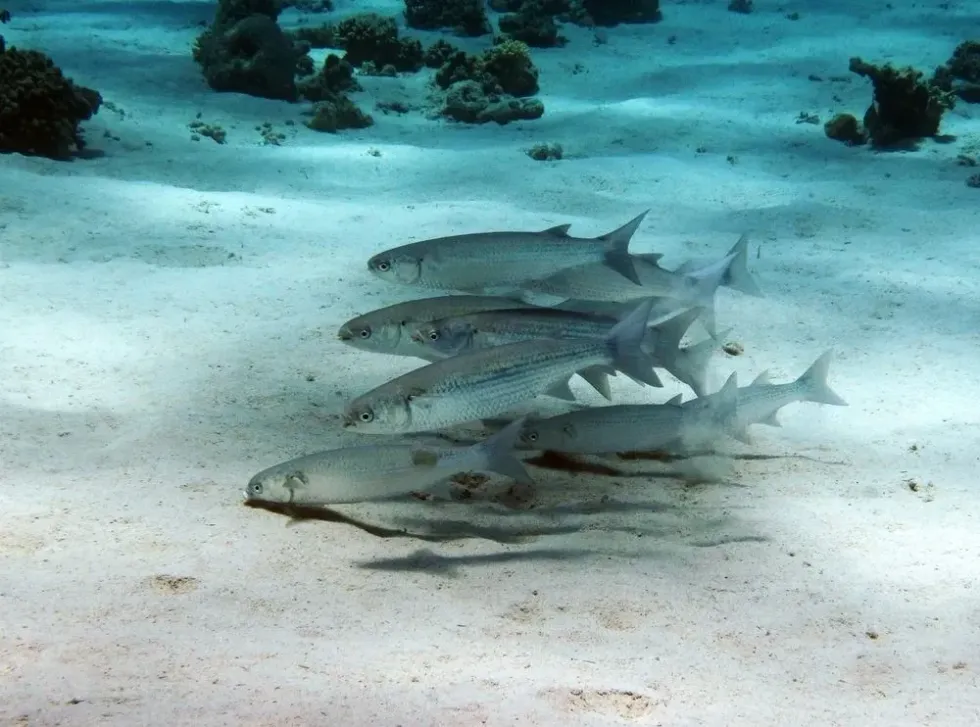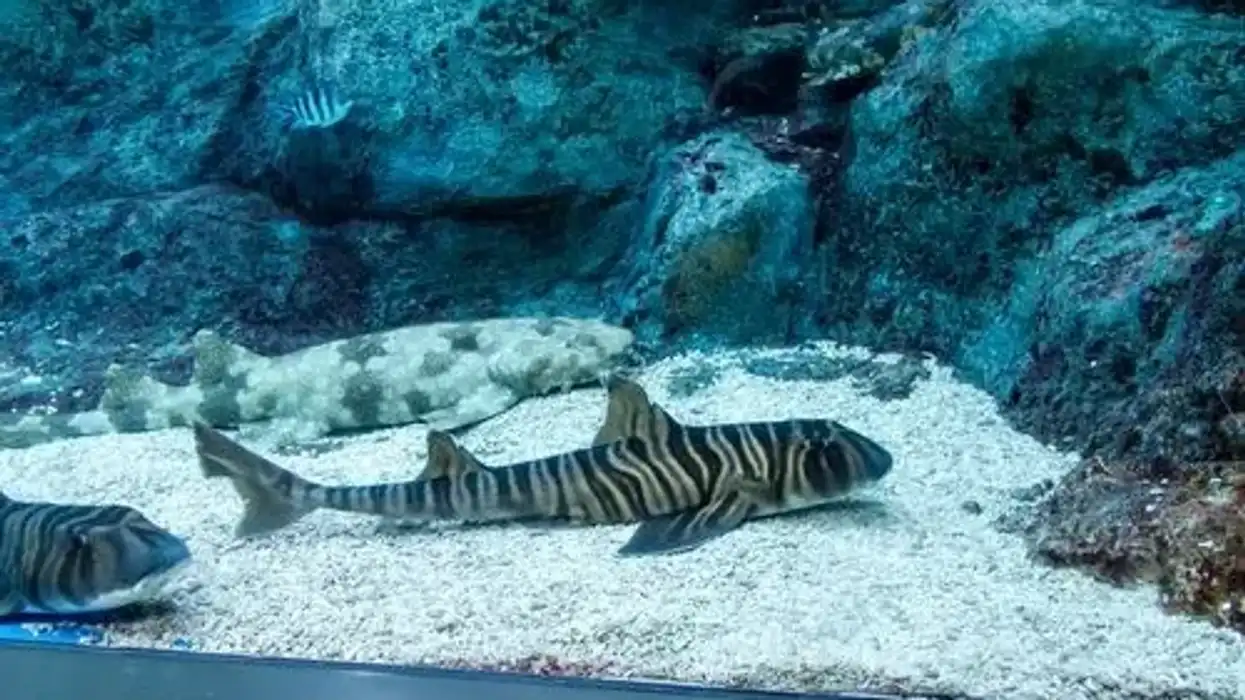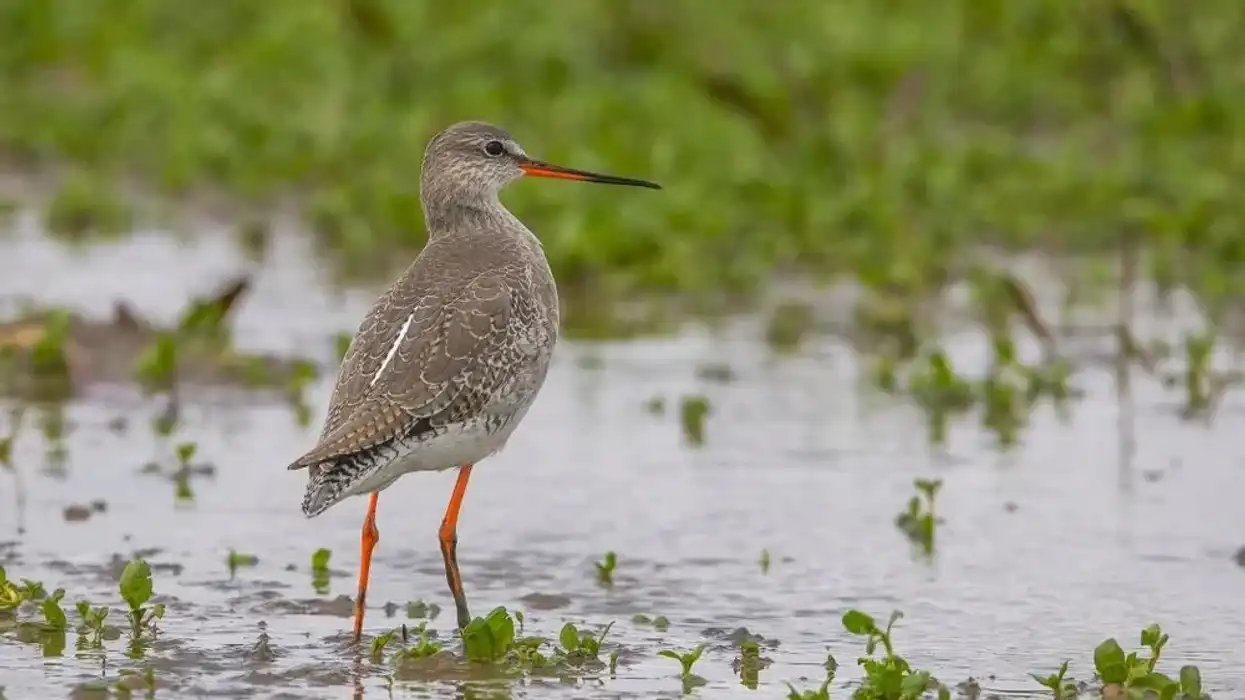The sand mullet, also known as sand gray mullet, is a mullet species belonging to the Myxus genus. Found in coastal marine waters, Myxus elongatus fishes are situated around Australia and in the southwest Pacific. They do not dwell in the depths of the ocean, but instead swim and spawn in shallow waters.
These members of family Mugilidae are known to swim in large schools. This habit is adopted to reduce the probability of being eaten by any dangerous predators. Swimming in large schools confuse predators and deviate the larger predator. The predator might munch down on some mullets, however, the overall probability is reduced.
This mullet of Australia is a common commercial fish and has been consumed as meat and even used as bait for fishing. This fish has many other names such as black spot mullet, bully mullet, lano, and wide bay mullet.
For more relatable content, check out these angelfish facts and mutton snapper facts for kids.
Sand Mullet Interesting Facts
What type of animal is a sand mullet?
The sand mullet (Myxus elongatus) is a type of mullet.
What class of animal does a sand mullet belong to?
Myxus elongatus belong to the class of fish. Sand mullets are the only member of the Myxus genus. Previously, it was suggested the pinkeye mullet and the freshwater mullet belonged to the same genus as the sand mullet. However, they have been found to be generically distinct.
How many sand mullets are there in the world?
We are not aware of the total population of this species.
Where do sand mullets live?
The sand gray mullet is found mainly in Australia, with their range extending across southern Queensland, Heron Island, all the way to Mandurah in Western Australia. Their populations are also found in the northern and eastern regions of Tasmania and the Lord Howe Island and Norfolk Island situated in the Tasman Sea. They also occur in southwest Pacific waters.
What is a sand mullet's habitat?
The habitat of the bully mullet is situated in shallow coastal waters as well as estuaries. Juvenile mullets are also found in temperate freshwater and brackish sources. They do not swim very deep and survive within depths of 3.28-32.8 ft (1-10 m).
Who do sand mullets live with?
Sand gray mullets are found swimming in large schools together.
How long does a sand mullet live?
In general, the mullet fish species is known to life for about 16 years.
How do they reproduce?
The bully mullet spawns near estuary mouths or within ocean waters. Spawning of eggs takes place between the months of November to March. However, peak spawning takes place from January, depending on the spawning location chosen by these fishes.
The reproductive organs of this fish are of different shapes and hues, depending on the development stage. As the mullet fish grows older, their reproductive organs begin thinning. It is said that mullets provide little to no care for the laid eggs.
The eggs are non-adhesive and pelagic. Most of these eggs do not survive and die during the early days. However, once they are completely developed, the mortality rate is quite low.
What is their conservation status?
The conservation status of the sand mullet or bully mullet is Not Evaluated.
Sand Mullet Fun Facts
What do sand mullets look like?
The sand mullet (Myxus elongatus) has a terminal mouth and this mouth has thick lips around it. The mullet has two dorsal fins and a homocercal caudal fin.
There are four dorsal spines, three anal spines, and a total of nine anal soft rays. The fins are in shades of brown and green, except the anal fin which has a white margin.
This fish's body is adorned with cycloid scales which are thin and flexible. Dorsally, the fish looks dark olive or red-brown. These scales are of a mixed hue, showing gray-silvery hues. They have big, bright yellow eyes.
The streamlined body shape allows them to swim fast in waters. Females usually have longer bodies when compared to male mullet fishes. A small black blotch is visible at the base of the pectoral fins. There is a small gold blotch present on the operculum.

* Please note that this is an image of the flathead gray mullet, one of the members of the Mugilidae family. If you have an image of a sand mullet, please let us know at hello@kidadl.com.
How cute are they?
We would not classify the wide bay mullet or bully mullet as a cute fish, yikes.
How do they communicate?
All fish communicate with electric pulses and body movements.
How big is a sand mullet?
The average length of the black spot mullet ranges between 9.05-9.85 in (23-25 cm). The biggest sand mullet recorded had a body length of about 35.43 in (90 cm).
This makes them about three times the size of the Congo tetra.
How fast can sand mullets swim?
Sorry, we do not know how fast this species from Australia can swim. However, their narrow streamlined body gives them an added advantage and helps them to swim fast.
How much do sand mullets weigh?
We do not know the weight of the sand mullet fish.
What are the male and female names of the species?
Both male and female mullets of the Mugilidae family do not have a specific name.
What would you call a baby sand mullet?
A baby fish, in general, is referred as fry.
What do they eat?
The wide bay mullet has teeth attached to fibrous strands, instead of being connected to the jaw bone. This helps them feed on mollusks, small crustaceans like krills and shrimp, and even phytoplankton. The flexible mouth structure permits these silvery fishes to open their mouths wider, so that they can consume more food at the same time.
Are they dangerous?
We would not classify this marine species as a dangerous one.
Would they make a good pet?
Due to their large size, keeping them as a pet might not be easy! Also, they are used to living in large schools and this is not something you can replicate in a home aquarium.
Did you know...
This mullet species uses swim bladders to change the amount of gas present in the bladder. This adjusts their buoyancy and helps them to adjust to their marine habitat efficiently.
This mullet species requires a lot of oxygen as they continuously swim in the water. The water passes over the gills through the grooves in their gill tissues.
The oxygen is taken from the water as the mullet exhales, and the water is pushed out through their pharynx. The blood in their bodies flows in the opposite direction over the gills. In this process, maximum oxygen is absorbed from the water.
The sea mullet is often confused for the sand gray mullet. However, the sea mullet grows up to 30 in (76 cm) in length and can weigh up to 282 oz (8 kg).
The sea mullet has a broader mouth when compared to the gray mullet, and the body is slightly fat and cylindrical. The body of this fish varies in hues of brown, green, and brown. They even have larger eyes in comparison to the bully gray mullet.
Do mullets have teeth?
Yes, mullet species such as the red mullet have a triangular mouth which have rows of sharp teeth.
How many eggs do mullets lay?
Certain mullet species are said to lay about 1-7 million little eggs in estuaries or sea waters.
Here at Kidadl, we have carefully created lots of interesting family-friendly animal facts for everyone to discover! Learn more about some other fish from our blobfish facts and flounder facts pages.
You can even occupy yourself at home by coloring in one of our free printable sand mullet coloring pages.









